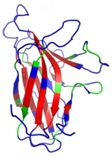 BMC Biophysics, BMC Ecology and BMC Endocrine Disorders have all recently been accepted for
BMC Biophysics, BMC Ecology and BMC Endocrine Disorders have all recently been accepted for
indexing by Thomson Reuters and are on course to receive their first Impact
Factors. We are delighted that these
journals have been selected for indexing, joining the many other journals in the
BMC series to have an Impact Factor.
BMC Endocrine
Disorders has been tracked from publications in 2009 and is due to receive
its first Impact Factor in 2012. A recent blog
post discusses one of the special thematic collections in BMC Ecology, which has likely contributed
to the increased visibility and recognition of the journal.
This is great news too for BMC Biophysics, considering it is less than a year since the journal re-launched on
the BioMed Central platform. Since re-launch the journal has recruited a new Editorial Board
consisting of world-renowned experts in the field.
In 2011 we
published many interesting articles, including one from our
Section Editor, Gerhard Gompper, which is an important theoretical contribution
to the field. In it, the authors
introduce and analyze a
discrete filament-motor protein model of subcellular microtubule self-assembly
in fission yeast, which demonstrates spontaneous generation of a number of
steady states, including spindles, nematics, and asters. We think this study
highlights the power and flexibility of online open access publishing in
biophysics, as the authors were able to directly link the article’s text to
their video figures. View their hypnotic animations of microtubule vortices here. 
The journal has already had a strong start to 2012 by
publishing an exciting article by Qin et al. describing the structural
determination of the EphA4 ligand binding domain, providing the first
experimental and computational evidence that intrinsic dynamics are most likely
to be responsible for the observed high conformational diversity that mediates
binding affinity and specificity. An accompanying commentary by Ruth
Nussinov and Buyong Ma in our flagship biology journal BMC Biology says: “These snapshots of multiple conformations of
the free EphA4 LDB provide a unique insight into the conformational dynamics of
EphA4 and the Eph-ephrin signaling pathways.”
After such a great start we are looking forward to
what 2012 has in store for these journals and would invite you to submit your
next research article to BMC Biophysics,
BMC Ecology and BMC Endocrine Disorders.
Shane Canning
Journal Development Editor
Simon Harold
Executive Editor
Comments